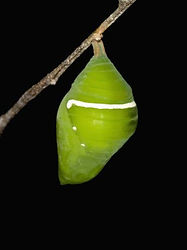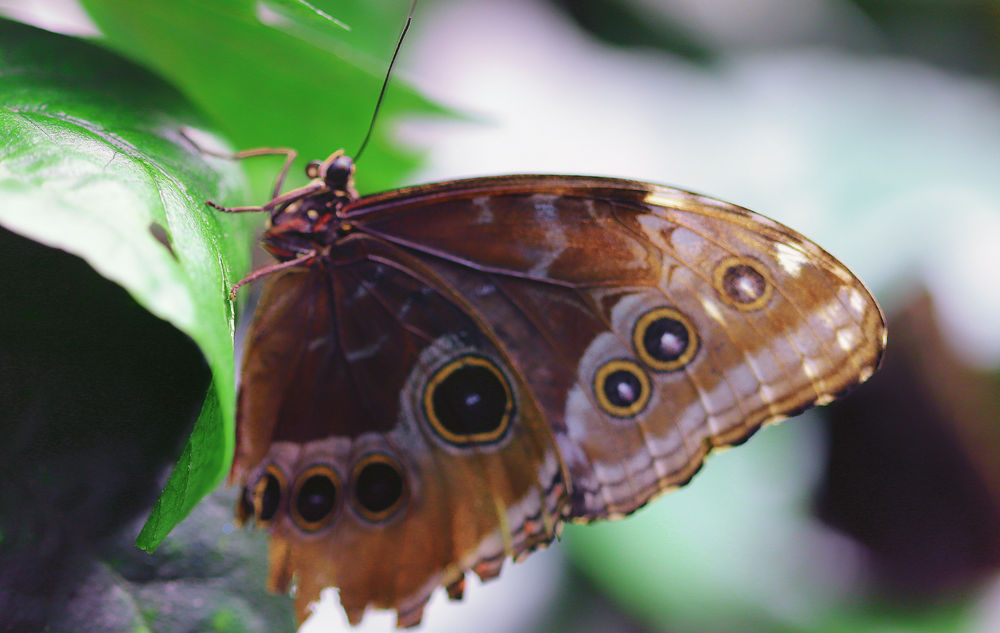The total number of days which it takes this species to grow into an adult is about 120. During this time, the butterfly is an egg for 14 days, then remains as larvae for 83 days, and then remains a pupa for about 19 days.
Morpho amathonte is distinguished by a large dark spot at the top of the front wings. The ventral sides of the wings are brown, becoming lighter towards the edges, with three or four colorful and bright eyespots clearly visible on each wing.
There are also numerous other morpho species, which number 29 in total, including the brown, green and incredibly rare white butterflies. The name “morpho” is thought to originate from the fact that these butterflies appear to change shape as they’re flying. What’s more, the term “blue morpho” can actually be a misnomer because many of the females are not blue at all.
When threatened, the butterfly will emit a strong odor from a gland on their front legs that functions as another way to repel predators.
The blue morpho also has what is known as a “flashing” defense. When in flight, its wings appear to flash from vivid blue to dull brown. The butterfly seems to continuously disappear and reappear again, making it very hard to track through the thick jungle foliage.
Their bright coloring is designed to intimidate rival males (blue morpho butterflies are highly territorial) as well as to make themselves extra visible to potential mates.
Meanwhile, the females are generally not blue at all and tend to have have wings exhibiting various shades of brown, yellow and black. Interestingly, however, due to a process known as sexual dimorphism, there are some rare examples of butterflies with both male and female traits which leads them to have one blue wing and one more neutral colored wing.
Avg. Wingspan: 100 - 150mm / 3.9 - 5.9 "
Diet: adults drink the juices of rotting fruit, tree sap, decomposing animals and fungi.
* Because the Blue Morpho dines primarily on rotting fruit, it does not pollinate flowers.
* Being Brush-footed butterflies, Amanthonte Morphos have a short pair of fore legs that are used to taste food, and two pairs of longer rear legs that are used for propulsion.


*The color of Morpho amathonte, as with all blue butterflies, is produced by the microscopic structure of the scales refracting light to create the blue coloration. This is called structural coloration. (Blue pigmentation does not exist in butterflies.)
Kingdom: Animalia, Phylum: Arthropoda
Class: Insecta, Order: Lepidoptera






